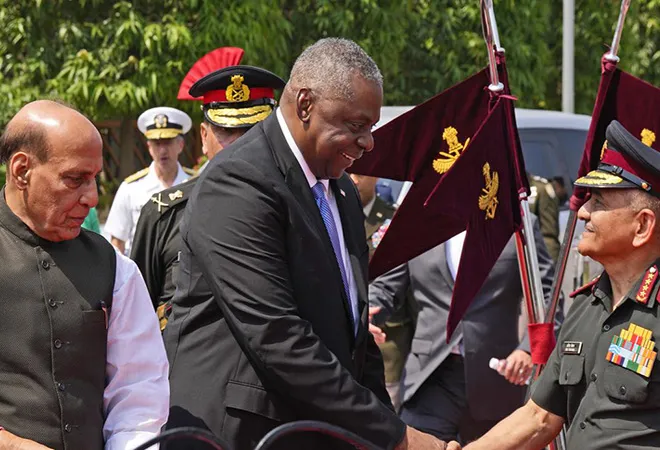-
CENTRES
Progammes & Centres
Location
The visit of America’s Defence Secretary earlier in June has prepared the ground for the the Indian Prime Minister’s U.S. visit next week, which could see some big ticket announcements

One of the most important steps taken during the visit was towards strengthening the bilateral defence relationship by creating a road map to promote collaboration in the defence industry.There was the launch of a new initiative, Indus-X, which is to provide a new impetus to the defence innovation engagement between the two countries. This builds on the U.S.-India bilateral Space Situational Awareness arrangement signed in 2022, which promises to enhance information-sharing and cooperation in the space sector. Furthermore, new areas in defence space exchanges have been identified based on the cooperation between the U.S. Space Command and India’s Defence Space Agency. India’s ‘Major Defence Partner’ (MDP) status along with the four foundational agreements signed with the U.S. now allow for the sharing of technology and more frequent cooperation. These have not only allowed the sharing of sensitive technologies without India having to become an ally but have also proved to be effective mechanisms to prevent backsliding due to procedural difficulties or structural differences.
The Defence Technology and Trade Initiative (DTTI) has often been criticised for being too ambitious and caught in the maelstrom of bureaucratic resistance, technicalities related to sensitive technology transfer, and structural differences in how the India-U.S. defence ecosystems work.Beyond the Indo-Pacific, a strong rationale for projecting broader industrial cooperation between Indian and U.S. companies in the defence sector is the existing scale of American investments in India. Behind this is an almost declaratory support by the U.S. government exhorting its companies to support India’s defence modernisation. In the long run, this could lead to at least three dominant trends under the umbrella of U.S.-India defence cooperation: nurturing and growth of an ecosystem of joint ventures between companies; the U.S. incrementally gaining a larger share in the Indian defence manufacturing, and both sides ironing out existing impediments in co-development and co-production. American companies led by Boeing, Lockheed Martin, BAE Systems, Honeywell Aerospace, Raytheon, Textron and others partner across a range of manufacturing activities related to the defence sector with Indian companies, most prominently with Hindustan Aeronautics Limited and the Tata group. These are likely to be supplemented by linking defence start-ups from both countries through an ‘innovation bridge’ that was announced in the iCET agreement. The Defence Technology and Trade Initiative (DTTI) has often been criticised for being too ambitious and caught in the maelstrom of bureaucratic resistance, technicalities related to sensitive technology transfer, and structural differences in how the India-U.S. defence ecosystems work. However, recent steps promise to jump start the DTTI by providing specific momentum to co-production and co-development in the defence sector. A standout in this regard has been the elevation of the India-U.S. relations strategic partnership with the iCET agreement. The visit of the U.S. Defence Secretary has prepared the ground for the official state visit of Prime Minister Narendra Modi to the U.S. on June 22 which could see a few big ticket announcements, especially in the area of defence cooperation. The sky, it seems, is the limit in the emerging defence partnership between two of the world’s leading democracies.
The views expressed above belong to the author(s). ORF research and analyses now available on Telegram! Click here to access our curated content — blogs, longforms and interviews.

Professor Harsh V. Pant is Vice President – Studies and Foreign Policy at Observer Research Foundation, New Delhi. He is a Professor of International Relations ...
Read More +
Vivek Mishra is Deputy Director – Strategic Studies Programme at the Observer Research Foundation. His work focuses on US foreign policy, domestic politics in the US, ...
Read More +